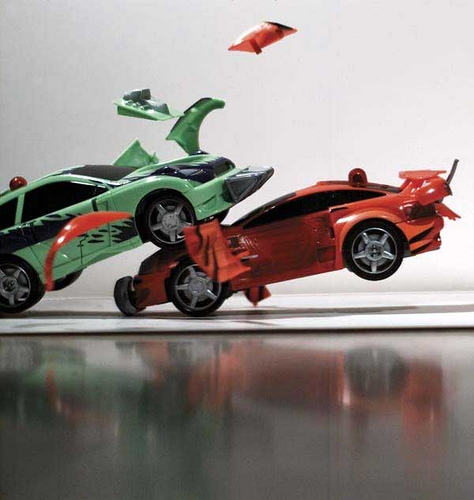
When is it appropriate to return to driving? The image is CC by K嘛.
As an orthopaedic surgeon I’m often confronted by patients asking me when they can return to driving. While this is a natural question, the answer is surprisingly difficult for us doctors. It is therefore nice to read MacLeod et al.’s and Fleury et al.’s excellent reviews on this subject, and yes: I’ve thankfully been in line with the evidence.
MacLeoad et al. – 2013 BJJ
There is surprisingly little done on driving and injuries/surgery, MacLeod et al. found 18 studies where none have more than 100 patients. As MacLeod et al. also point out – no one seems to know who’s responsibility it is: we doctors are sparingly educated in this area, the insurance companies can’t agree, and the police don’t want to comment on the subject.
Most studies that they found looked brake reaction time (BRT), or brake pedal force (BPF). The conclusion was that about two months should be OK, although some suggested that one month might be enough. While the braking seems to be an obvious focus when it comes to security and driving, modern cars have nowadays auto brake or brake assistance – should we ask our patients what they’re driving? And do we know that BRT/BPF actually are the problem, maybe fear of pain causes loss of focus (even without drugs), or (as the authors mention) the ability to move the foot between the pedals may be impaired.
I’m also surprised that they didn’t find a study using an insurance claim database. Cross-referencing that database with actual patients should be a very interesting take on this issue. By looking at the number of accidents against time after surgery/injury we might be able to see when the accidents occur, and more importantly if there actually is a problem. Many patients are usually very aware of their injury and will probably be very careful when driving, maybe we don’t need regulations… at least I have never encountered this theoretical problem in real life (now that’s evidence :-D)!
Fleury et al. – 2012 SMW
In another nice review by Fleury et al. make a very interesting and similar read. I like their article as they in their recommendation separate:
- automatic transmission from manual transmission cars
- right from left leg
- encourage not to drive as long as an upper extremity is immobilized
It is a very comprehensive list, although in some cases it is a little less than my gut would recommend. I’m biased though by living in a country where you get taxi to and from work (in case your dr. deems it necessary), and the public transportation works very well.
Swedish authorities and driving
When I looked at the Swedish Transport Agency and in their medical driver rules they mention: sight, diabetes, ability to move (as a permanent inability, paraplegia etc.), epilepsy, hearing and balance, dementia, sleep disturbances, mental illness or disability, and drugs. These seem mostly to apply when acquiring a license and I have not found any mentioning of temporary disabilities.
Other sources
One of my favorite orthopaedic sites orthobullets.com had two articles on driving and orthopaedics, tibal plafond fractures with 6 weeks after weight bearing, and ankle fractures where they mention nine weeks for operatively treated ankle fractures.
